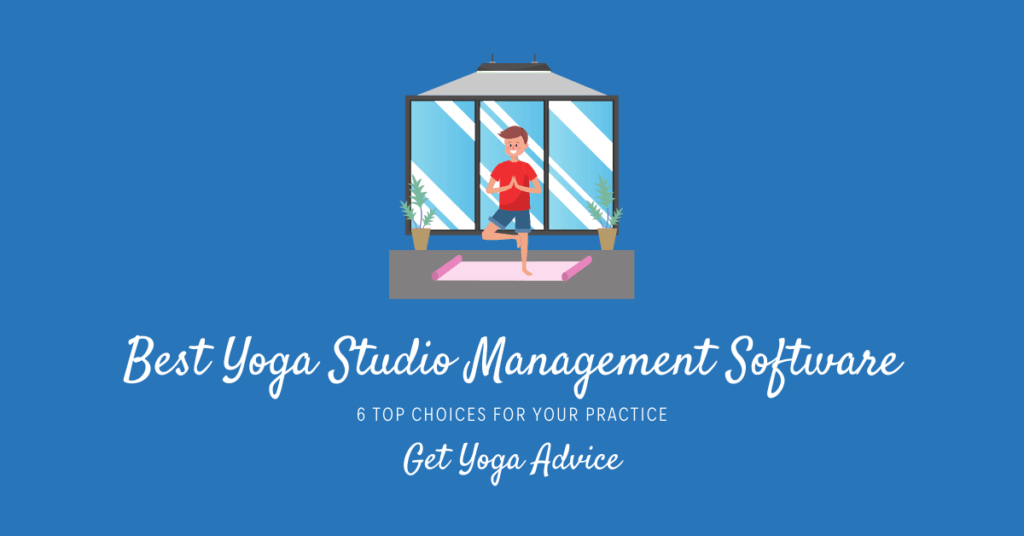There is a lot of advice out there about owning a yoga studio, but there are three things to focus on to make sure your business is a success.
Understanding your budget is key to setting up and running any business, and you’ll never be as successful as you can be if you don’t understand what your services are worth. Finally, in the age of social media, branding is more important than ever.
Let’s take a closer look at these three tips for owning a yoga studio so that you know how to help your business succeed.
Contents
- 1 5 Common Yoga Studio Branding Mistakes
- 2 How To Get Yoga Studio Branding Right
- 2.1 1. Understand Your Financial Situation
- 2.2 Early Start-Up Costs
- 2.3 Monthly Budget
- 2.4 Initial Class Schedules
- 2.5 What About Retail?
- 2.6 How to Raise Start-Up Money
- 2.7 2. Know What You’re Worth
- 2.8 Pricing
- 2.9 Promos
- 2.10 Measure Your Worth
- 2.11 3. Develop Your Brand
- 2.12 Important Things to Remember
- 2.13 Teacher Training Program
- 3 Final Word on Owning a Yoga Studio
5 Common Yoga Studio Branding Mistakes
Here are some of the most common branding mistakes made by yoga studios:
1. Focusing Too Much on Logos, Decor, and Website Design
Branding is not just the things you see. It should get to the heart of your business and demonstrate what makes you different. To figure that out, ask yourself, how do I want my customers to feel when they’re in the studio?
What, other than yoga instruction, can you offer them? Is there a part of the industry that you think you could improve on? Work through these questions to get a better idea of the type of yoga studio you’re running.
2. Trying to Serve the Entire Community
Take some time to figure out the demographics you’re best-suited to helping. Do you want to hold special classes for pregnant women, plus-sized women, mothers and babies, men, couples, or seniors? Your studio cannot be all things to all people, but you can focus on one or two special classes and begin building a niche.
3. Copying Your Competitors
t’s tempting to look at other brands and think, I want to do that, too. But you’re not them and you can’t copy their exact methods. Your yoga studio needs to suit you: your strengths, your needs, your vision. Ask yourself, what don’t you like about your competitors? Can you improve upon your own methods? How can you grow a successful yoga studio while maintaining your own identity?
4. Making too many changes autopilot
Once you have a brand established, continuing to change it does a lot of damage to the potential for growth. To be memorable, you have to be consistent. For example, if you have a website, make sure every instructor’s photo is taken in the same place with the same lighting. Use the same images on your Facebook, Instagram, and other social media accounts.
5. Going on Autopilot
Branding is not just something you do and then let it coast along as long as you’re in business. Review your plan every year to make sure nothing has changed. Maybe you had a specific yoga class take off and you want to feature it, or one that didn’t do so well and is no longer in the rotation.
Have you met your goals for the year? What changed? What stayed the same? Did you expand? Bring in new staff? Keep everything up to date so that you’re always putting forth the best and most honest representation of what you’re offering right now.
How To Get Yoga Studio Branding Right
Now let’s cover how to get yoga studio branding right.
1. Understand Your Financial Situation
If you’re a new yoga studio owner or trying to figure out how to turn your luck around, finances should be at the top of your list of things to pay close attention to.
Some of the following tips apply more to those who are in the planning stages of owning a yoga studio, but most of them can be adapted to anyone’s situation.
Early Start-Up Costs
One of the first things you should look at when opening a yoga studio is the cost of commercial real estate. Do your homework by looking at an available commercial property for rent in your area so you know what to expect.
Studio space of about 750 to 1000 square feet should comfortably hold about 25 students and leave you a little room to grow. You should also consider whether or not you plan to expand into any other areas, like selling water, juices, and snacks, or merchandise.
You’ll also need a few thousand dollars for a deposit on your lease before you sign, which is determined by multiple factors but depends a lot on how large the space is.
Simply put, the larger the space, the more it will cost both upfront and month to month. Most commercial leases ask for a three to five-year commitment, so make sure you do your research carefully. You’ll be stuck with the space for quite a while.
After you choose a space, determine how much work needs to be done before you can think about opening. If you’re lucky, you found a spot that’s easily adapted to fit your yoga studio. If not, you’ll need to hire a contractor to get the space where you need it to be.
Talk to your landlord, too. Sometimes, if you’re making improvements that will increase the value of the property, the landlord may be willing to chip in toward the final cost.
Depending on how much work needs to be done, the cost of renovations can vary drastically. Expect to spend around $10,000, but the final cost may be significantly more or less than that.
High-quality props are worth the investment for your clients to use over the years. Depending on what equipment you purchase, this can cost around $1,000 or more.
At this stage, you should also consider investing in high-quality mats to lend to students in your classes. This might seem like an area where you can skimp a bit, but don’t. Pay for mats that are high quality so you don’t have to replace them as often.
Monthly Budget

After you’ve covered the upfront costs, it’s time to figure out how much you can expect to spend on month to month on expenses. There are a lot of costs that will creep up, but the basics are rent, staff pay-checks, your pay-check, utilities, professional liability insurance, and any yoga studio management software subscriptions.
Determine how you will pay the instructors. You want them to feel valued and like they have a home with you, but you’re running a business, so you need to be as practical as possible. What makes the most sense for your setup?
Some studios pay their instructors hourly while others pay them according to the number of people attending their classes, with or without an hourly base pay. Clients are dedicated to their favorite instructors, so make sure you pay them what they’re worth so they stick around.
Initial Class Schedules
When you’re first starting out, keeping class offerings somewhat limited is usually a good approach, for a few reasons. Classes aren’t going to be packed the day you open your doors, so offering limited class times means you don’t have to pay instructors to teach only a handful of people.
If there are fewer times available, classes will seem fuller, which ups the energy and begins to attract attention. As word of mouth spreads and more people want to sign up for classes, expand accordingly.
You can keep costs as low as possible by taking on as much of the works yourself as you can handle. Do you need a receptionist right away? How many classes can you handle a week? Do you have time to clean or do you have to hire someone to do it for you?
Can you run the studio’s social media pages, or should you hire outside help? Don’t burn yourself out, but do what you can to save costs in the beginning.
What About Retail?
Retail might be the farthest thing from your mind when you’re first getting started, but it’s an effective way to boost revenue if you know what you’re doing.
Start with basics, like branded mats, towels, tee-shirts, and tanks. Rent the mats out to students who need them, and casually let them know that the same mats are for sale if they’re interesting.
Tee-shirts and tanks are also great branding. When students wear them outside the studio, it gets your business out there, not only to their friends but to anyone who happens to be walking by and notices their shirt.
How to Raise Start-Up Money
If you’re still in the planning stages, you might be wondering how you’re going to come up with the money to get started. Here are some ideas:
- Bank loans – Bank loans have interest rates that typically depend on your credit score and can be as high as 10 percent. The bank will review your financial history, including your credit report, bank accounts, debt, and assets, before approving a loan. If you have good credit, this is a good option. If not, there are other avenues to try.
- Crowdsourcing – Set up a GoFundMe or IndieGoGo campaign and promote it aggressively on social media. Offer free classes, a branded yoga mat, or discounts as an incentive for people to donate.
- Ask friends and family – Admittedly, this can often be uncomfortable, but if you feel that you have someone you can ask without it straining your relationship, it’s always an option.
Be realistic about the money you have and what you can do with it. How many class packages or memberships do you need every month to make sure the expenses are covered? Is there anywhere you can cut corners in the beginning and build upon as your business grows?
If you sit down and really plan, you’ll know where you stand, and what you can expect.
2. Know What You’re Worth

One of the most difficult things for most first-time business owners is figuring out how much they’re worth. How much should you charge for your services? How much money do you have to bring in every month to stay in business and make enough profit to live on?
You won’t be able to set up a pricing model until you have the space and know what your monthly expenses are. Once you know how much you need to make, you can sit down and determine the best way to get there.
Aim for a pricing model that reflects the size of your studio, what you offer, and the level of customer service you provide.
Pricing
Some studios offer low-cost classes and plan to attract more people into their yoga community while others ask for a slightly higher but fair price. Unless you have a boutique yoga studio in an upper-class area where you know you can get it, it’s not a good idea to raise your prices much higher than your competitors.
Generally, drop-in pricing ranges from $10 to $30 per class or unlimited monthly classes for $130 to $150 a month.
Some studios also offer deals like 10 classes a month at a discounted rate. You can also offer monthly memberships that allow access to unlimited monthly classes as well as discounts on retail items or access to special rewards, like coupons or online yoga classes.
The best thing to do is research what your competitors are offering. If you’re charging significantly more than they are, you probably won’t attract much business, but you don’t want to undersell yourself too much, either, because, again, this is a business and you have to make a profit.
When you get students in the door, you can show them the value of coming to your studio. Eventually, your studio might develop a substantial client base and you may need to rethink your pricing structure if you decide to expand. This is largely down to the instructors, though, and how much people like their classes.
Promos

If you’re not attracting enough clients, tweak your pricing model a bit and see if it helps. Lower your prices a few dollars, offer discounts, or run other promos to attract attention.
Post prices and promotional information clearly where customers can see it when they come into the studio. If you offer bundles or memberships, break each one down to the price per class so students can see how much they will save by investing in these options.
Another thing you should offer is gift cards. This not only increases sales, but encourages current students to bring in new clients. Set up promos for gift cards around the holidays to attract as much attention as possible.
Here are some other great ideas for pricing promotions you can establish to bring in more students without short-selling yourself:
- Package bundling – Offer two packages at a discount to people in the same household who can share a package at a rate of 10 to 20 percent off full price.
- Rent out your studio – Offer private studio time or rent out the space to instructors looking for a studio to run their classes in.
- On-site classes – Offer yoga classes in schools, businesses, churches, girls’ weekends, or nursing homes.
- A yoga retreat or yoga school – This takes a lot of planning, but can be a worthwhile experience and helps to create brand loyalty. Retreats can be open to anyone, or they can be included as an incentive to sign up and maintain a membership to the studio. This is also a great way to boost sales in other areas, like gift certificates and bundles, and you can even create special merchandising for people who sign up for the retreat, like a commemorative tee-shirt, mug, mat, or yoga towel.
- Seasonal promotions – Keeping your website and your studio up to date is important, and there’s no better way to do it than with seasonal promos. Offer back to school discounts for college students in the fall, discounted gift cards at Christmas, or a special bundle for Mother’s Day classes.
- First week free – This is a great way to get people in the door and show them why they should keep coming back.
- Referral bonuses – Ask new students who recommended the studio to them and then give that person a free class or coupon.
Measure Your Worth
It’s very easy to undervalue yourself when starting out in any business. You might look at your competitors and think, “I’m not as good as them,” or, “I’m not as established as them” and underprice your services.
Don’t do that. Be honest with yourself about what you’re offering and set prices that are fair to your customers without damaging your bottom line.
3. Develop Your Brand

Branding is one of the most important parts of running a successful yoga studio business. A lot of yogis might prefer to think that the yoga mindset is above commercialism, but if you’re trying to run a successful business, you have to accept the fact that marketing and branding are essential.
It pays to devote time to branding because, to do it right, you have to have an overarching, cohesive plan. You want to launch your studio with an idea of who you are and what you’re about to help you draw in the right crowd.
At the same time, you want to create something that makes your studio stand out instead of falling into the same cookie-cutter ideas as your competitors. Branding in yoga can be tricky.
You need to establish your business and what it stands for, but you have to do it in a way that doesn’t seem too commercial or make your student feel like they’re selling out instead of coming to you for a mind and body altering experience.
Important Things to Remember
There are key things to think about when it comes to branding in yoga. First, yoga has such a long tradition. You have to decide if you want to draw on that tradition or come from a place that’s a little more modern.
While you want to stand out, in yoga, it’s not a good idea to do things for shock value. Instead, expand on the substance of what you’re doing as a yoga studio. Acknowledge the tradition, but add your own depth to it.
Be as authentic as possible. You want to create something that communicates who you are and conveys the idea that your studio is new, exciting, and dedicated to serving your students.
Don’t brag or boast, and be honest. If you make false claims, there is a very good chance someone will eventually file a lawsuit, claiming your business is a fraud or that you misrepresented the results of your yoga class.
Finally, think about your ideal customer and create your branding so that it’s attractive to them. People who are dedicated to wellness and yoga often want to feel like they have a deeper connection to the brands they use, so make sure your studio makes them feel like they chose a place that respects the principles of yoga and is dedicated to helping students succeed.
Teacher Training Program

Once you have your branding down, you have to make sure everyone is on the same page. Yoga teaching orientation is essential for new teachers, not so much to show them how to teach their classes, but so they know what you expect and what the studio stands for.
It’s also very important to play to the strengths of your instructors. For example, if you bring in someone who is experienced with prenatal yoga and you don’t currently offer a prenatal class, it might be the time to start thinking about expanding your brand.
Final Word on Owning a Yoga Studio
Whether you’re a new studio owner or a studio manager looking for a way to revamp your current yoga business, these three tips should help you stay on track to a successful studio.
It’s important to balance the yoga philosophy with the practicalities of running a successful business as a yoga entrepreneur. By paying attention to your finances, knowing the value of your business, and perfecting your branding, you’ll be well on your way.


